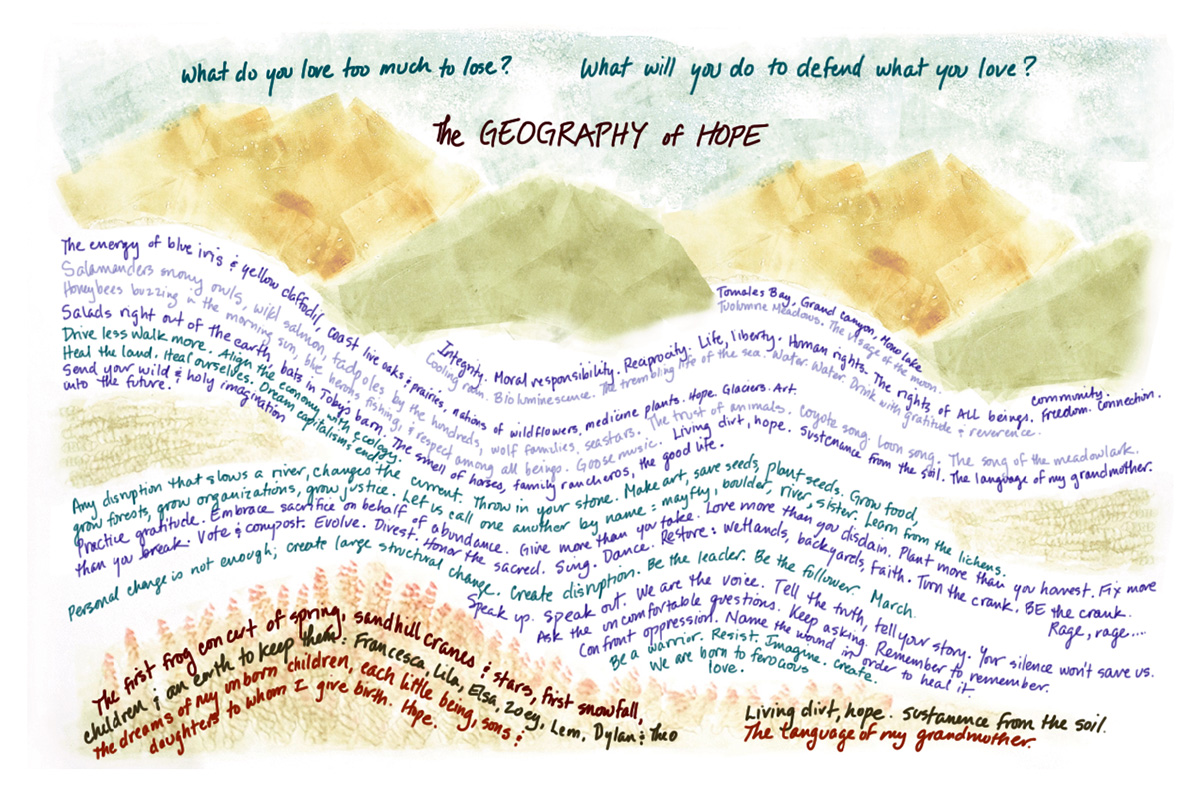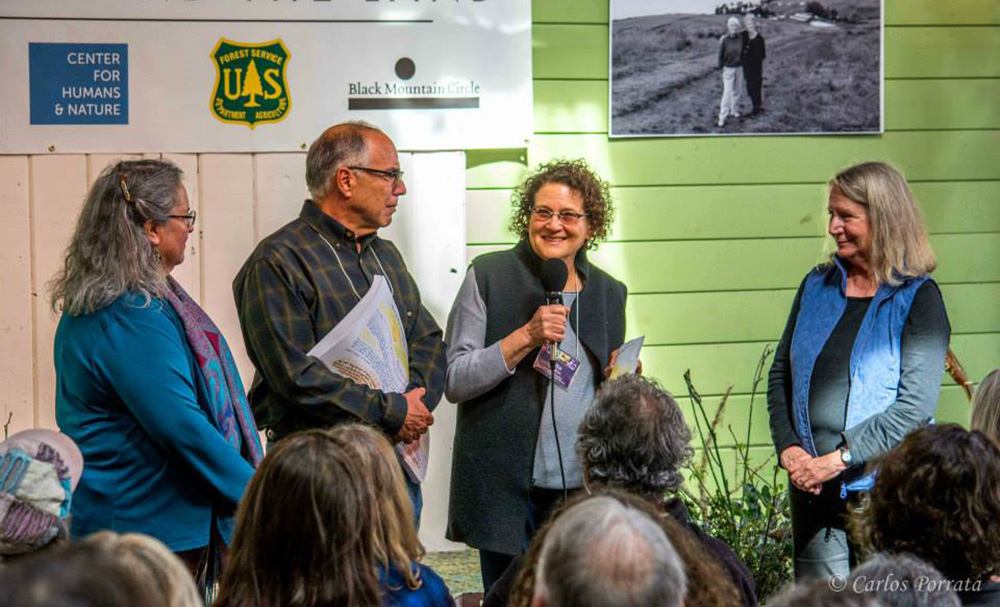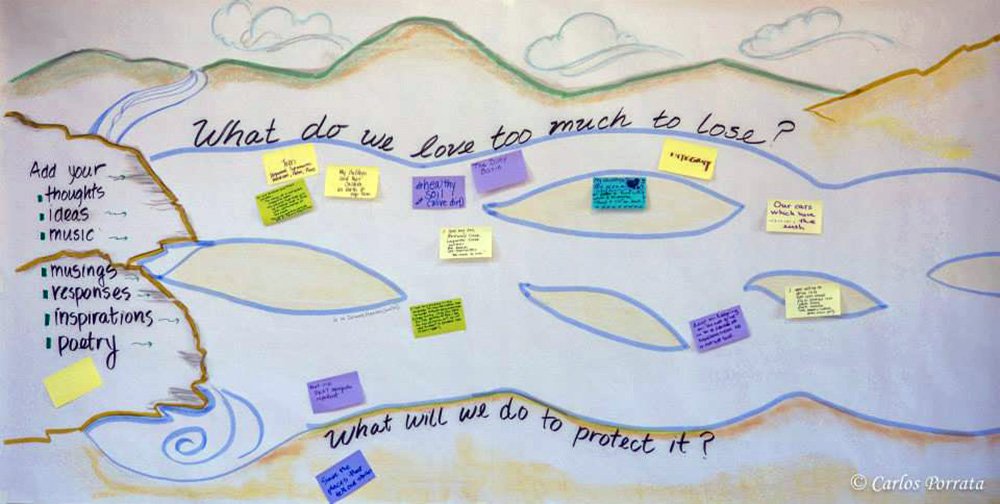
This post was written by Lisa Cutting, 2002-2020 Eastern Sierra Policy Director, 2000-2001 Environmental Resource Coordinator, and 1999 Mono Lake Intern.
Two weeks ago, I was one of over 200 people who attended the Geography of Hope Conference in Point Reyes Station. Founded in 2008 by Point Reyes Books, the Geography of Hope Conference takes its name from Wallace Stegner’s famous quote, “We simply need that wild country available to us, even if we never do more than drive to its edge and look in. For it can be a means of reassuring ourselves of our sanity as creatures, a part of the geography of hope.”

As it is for many of our members, Mono Lake is my “geography of hope.” Throughout the entire conference I held images of Mono Lake and our staff back in Lee Vining in my mind, wanting to share every detail with them. After a full weekend of stories, poetry, and music I left feeling inspired and with a renewed determination to return to the critical work of protecting Mono Lake. Sometimes it’s important to take a step back, to be philosophical, to be inspired by writers, authors, thinkers, and to share and listen to the voices of others.
It was clear from the very beginning of the conference that climate change issues would dominate the discussions. And although the theme was Women and the Land, discussions included topics ranging from carbon emissions reduction to necessary and radical social restructuring to issues of environmental justice. The gracious hosts, Kate Levinson and Steve Costa, co-owners of Point Reyes Books, provided the framework and space to engage our collective hearts and minds, thereby galvanizing us into action—now, in this most urgent of times.

Respected authors and eloquent speakers Kathleen Dean Moore and Robin Wall Kimmerer co-chaired the event, leading a wide variety of presenters including Gretel Ehrlich, Susan Griffin, Rebecca Solnit, Lauret Savoy, Priscilla Solis Ybarra, and poets Robert Hass, Camille Dungy, and Brenda Hillman, just to name a few. Sessions included topics such as “What is the work of a writer in a wounded world?,” “The dance of love and fear: Stories of resistance and resilience,” and (my favorite) “When rivers change direction: Eddies, upwellings, and avulsions.”
Kathleen Dean Moore shared, “We will need to mobilize all our human capacities—to celebrate and to grieve, to dread and to take heart, to embrace and to resist, to radically re-imagine who we are and how we live. In the coming time of storms, it may be that this is the new geography of hope.”
Conference participants honed in on two fundamental questions: What do you love too much to lose? And, what will you do to defend what you love? The group delved into these questions and turned the answers into a collective artwork with the answers flowing as braided channels of a single stream intertwining and connected. Throughout the weekend, all of us added our specific loves by way of post-its on the blank canvas of our collective contributions.
Some of the great loves were “blue iris, yellow daffodils, salamanders, coyote song, mayfly, boulder, glaciers; Mono Lake, Tuolumne Meadows, Tomales Bay, Grand Canyon.” The flowing channel of action called for us to “grow food, grow forests, grow organizations, grow justice. And (that) personal change is not enough; create large, structured change. Create disruption. Be the leader. Be the follower. March.”
So, march I will.

